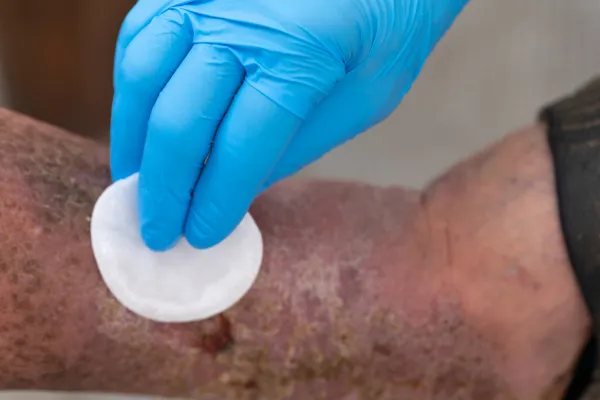
What Is Debridement—and Why Does It Help Wounds Heal?
If you’ve been dealing with a slow-healing wound—like a foot ulcer, leg sore, or pressure injury—you might’ve heard the word “debridement” during a doctor’s visit. It’s a strange word, but it’s actually one of the most important steps in helping wounds heal properly.
Let’s break it down in simple terms so you can understand what debridement is, why it’s done, and how it helps get you back on your feet safely.
First, What Is Debridement?
Debridement (say it like duh-breed-ment) is a medical way of cleaning a wound. But it’s more than just wiping something off the surface—it’s the removal of dead or damaged tissue from a wound so healthy skin and tissue can grow.
You might think, “Why not just leave it alone?” But when dead tissue sticks around, it can block healing and even lead to infections. That’s why debridement is often needed, especially for ulcers, diabetic foot wounds, or long-term pressure sores.
Why Does Dead Tissue Slow Healing?
Here’s the simple version: Your body needs a clean, healthy space to rebuild skin and close the wound. But when dead skin or infected tissue is in the way, the healing process gets stuck.
Think of it like gardening. If a plant has rotting roots, you can’t just water it and hope it grows—you need to cut away the bad stuff so the healthy parts can thrive.
Dead tissue also creates a perfect home for bacteria. That can increase your risk of infection, swelling, and even serious complications like cellulitis or gangrene.
How Does Debridement Help?
When done correctly by a podiatrist or wound care specialist, debridement helps by:
✅ Reducing infection risk
Removing infected or dead tissue takes away the bacteria’s hiding spot.✅ Helping new tissue grow
Once the damaged tissue is out of the way, your body can build new, healthy skin.✅ Allowing treatments to work better
Antibiotics, dressings, and ointments are more effective on clean wounds.✅ Speeding up healing
A clean wound is a healing wound. Debridement gives your body a better shot at closing the sore naturally.
What Are the Different Types of Debridement?
There isn’t just one way to clean a wound. Your podiatrist will choose the best option based on your health, the size of the wound, and how much tissue needs to be removed. Here are the most common types:
1. Sharp Debridement
This is done with medical tools like scissors or a scalpel to carefully cut away dead tissue. It’s quick and very precise. Most people feel little to no pain, especially if a numbing agent is used.
2. Autolytic Debridement
This is a natural way where special dressings help your body break down dead tissue on its own. It’s painless and works well for smaller or less serious wounds.
3. Enzymatic Debridement
A medical cream is applied to the wound to help dissolve dead tissue over time. This is a good option if sharp debridement isn’t right for you.
4. Mechanical Debridement
This involves using gauze, a wound irrigation system, or even a special dressing to gently remove tissue. It’s not used as often anymore but can be helpful in certain situations.
Is Debridement Painful?
Not usually. Some people feel a little discomfort, especially with sharp debridement, but many wounds are already numb due to nerve damage (especially in people with diabetes).
If needed, your podiatrist can use a local anesthetic to keep you comfortable during the process. For most people, the relief of seeing their wound finally improve outweighs the momentary discomfort.
Who Needs Debridement?
You may need debridement if you have:
A foot ulcer that hasn’t healed in weeks
A leg ulcer or pressure sore that keeps reopening
A wound that’s oozing, smelly, or looks infected
Skin that’s black, yellow, or thick and scabby around the sore
Diabetes, poor circulation, or neuropathy and notice a sore that won’t heal
It’s not something everyone needs—but if your wound isn’t getting better, debridement could be the key step to help your body recover.
What Happens After Debridement?
After the dead tissue is removed, your podiatrist will:
Clean the wound thoroughly
Apply a fresh dressing
Recommend specific care (like keeping pressure off the area)
Schedule follow-up visits to monitor healing
Some people need more than one session. But each step is moving you closer to recovery and helping protect you from bigger risks—like infections or amputations.
Let’s Help That Wound Heal
At American Surgeons Group, we specialize in gentle, effective wound care. Whether it’s a slow-healing ulcer, pressure sore, or foot wound caused by diabetes, our team is here to help you feel safe, supported, and on track to healing.
If you’ve been wondering why your sore won’t go away—or what to do about a scab that just doesn’t look right—don’t wait.
Give us a call. We’ll take a look, answer your questions, and guide you through care that actually works.
